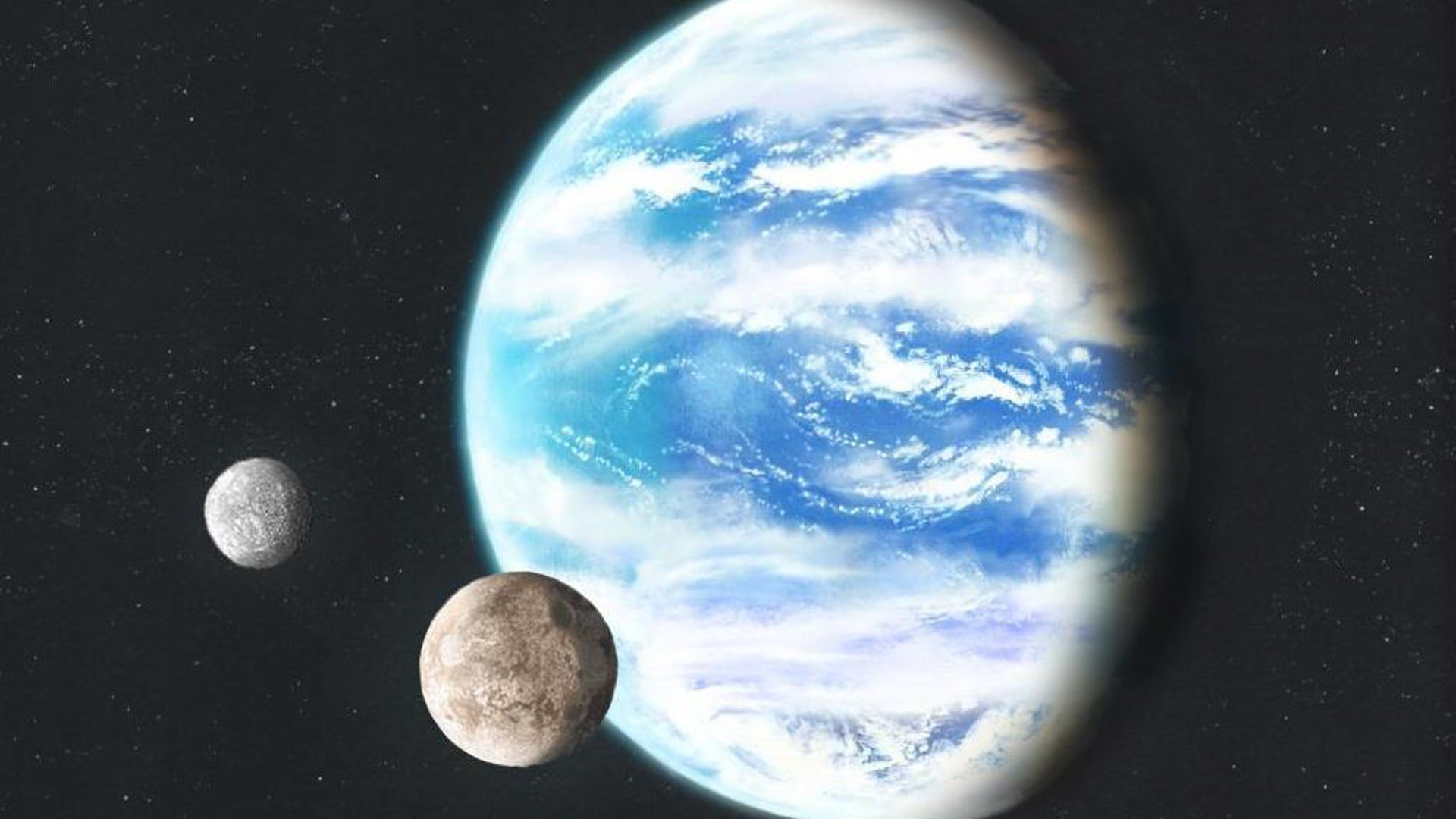James Webb Space Telescope's atmosphere studies could provide clues to land and sea on alien worlds
The findings could allow NASA's James Webb Space Telescope to determine the fraction of land and sea on alien worlds.

A new simulation of a hypothetical alien world's atmospheric conditions could help inform the work of the James Webb Space Telescope and reveal clues about exoplanets' ability to host life.
The climate of any potentially Earth-like rocky world that always shows the same face to its star depends greatly on the amount and location of land and water on the planet's surface, the new research found. Even though current telescopes lack the resolving power to see the surface of an exoplanet, the findings could help astronomers draw conclusions about the planets' surfaces by doing spectroscopic studies of their atmospheres.
"Our work demonstrates that the distribution of land on an Earth-like planet has a big impact on its climate, and should help astronomers looking at planets with instruments like the James Webb Space Telescope to better interpret what they're seeing," Evelyn Macdonald, a graduate student in the Department of Physics at the University of Toronto, said in a statement.
Related: The James Webb Space Telescope will map the atmosphere of exoplanets
Macdonald led the new study, which utilized a climate simulation called ExoPlaSim to model how the amount and distribution of land and sea affect the climates of so-called tidally locked worlds.
A tidally locked world is in synchronous rotation, meaning it takes the same amount of time to spin on its axis as it does to orbit its star. As such, the planet rotates at a rate that means it always keeps the same face pointed toward its star. It is the same phenomenon that keeps the moon showing the same face toward Earth.
Rocky planets orbiting red dwarf stars are particularly susceptible to tidal locking, because red dwarf systems tend to be scaled down and the planets are often very close to their stars.
Get the Space.com Newsletter
Breaking space news, the latest updates on rocket launches, skywatching events and more!
Despite their proximity to their star, these worlds can be in the habitable zone — the right distance where it can host liquid water on its surface — because red dwarfs are cool, with surface temperatures of about 6,300 degrees Fahrenheit (3,500 degrees Celsius), or 3,600 F (2,000 C) cooler than the sun.
These planets orbit their star in a matter of days, which makes them prone to becoming gravitationally locked with their star. This so-called tidal locking does not mean a planet's near-side hemisphere is in constant daylight and the far-side is under constant night, however.
Consequently, the habitability of such a planet also depends on the planet's ability to redistribute heat from the dayside to the nightside so that conditions don't become too warm or too cold.
Related: Imagining early Earth as an exoplanet can help us search for alien life, scientists say
With fellow astronomers at the University of Toronto, Macdonald modeled such a hypothetical world in two configurations: one with a circular continent at the substellar point (directly beneath the star) on the dayside surrounded by ocean, and one with a circular ocean at the substellar point surrounded by land. The amount of land and ocean in each configuration was then varied to see how it would affect the planet's climate.
The models showed that the average global temperature on a tidally locked world depends more on the amount of land than on the location of the land. In the simulation, planets with a similar dayside fraction of land, whether in a central substellar continent or around a substellar ocean, saw average surface temperatures increase by up to 36 F (20 C).
Furthermore, the greater the amount of land, the hotter the dayside and the drier the planet's atmosphere. This is because the presence of more land means there is less surface water to evaporate into the atmosphere, which also results in less precipitation. "So the land has a desert climate," Macdonald told Space.com.
In general, however, Macdonald found that "the planets with the highest globally averaged surface temperatures and the most atmospheric water vapor have oceans in the center of their daysides and land on the cold parts of the planet."
The increased atmospheric water vapor leads to more clouds and since water vapor is a greenhouse gas, it gives the atmosphere a greater ability to absorb and transport heat to the planet's nightside. Since one of the James Webb Space Telescope's science goals is to analyze the atmospheres of nearby terrestrial exoplanets to try and determine whether any of them could potentially be habitable, this new research will help further characterize what those planets, and tell us about whether they are likely to be drier desert worlds, or planets of land and sea.
The research is published in the June 2022 issue of the journal Monthly Notices of the Royal Astronomical Society.
Follow Keith Cooper on Twitter @21stCenturySETI. Follow us on Twitter @Spacedotcom and on Facebook.
Join our Space Forums to keep talking space on the latest missions, night sky and more! And if you have a news tip, correction or comment, let us know at: community@space.com.

Keith Cooper is a freelance science journalist and editor in the United Kingdom, and has a degree in physics and astrophysics from the University of Manchester. He's the author of "The Contact Paradox: Challenging Our Assumptions in the Search for Extraterrestrial Intelligence" (Bloomsbury Sigma, 2020) and has written articles on astronomy, space, physics and astrobiology for a multitude of magazines and websites.









